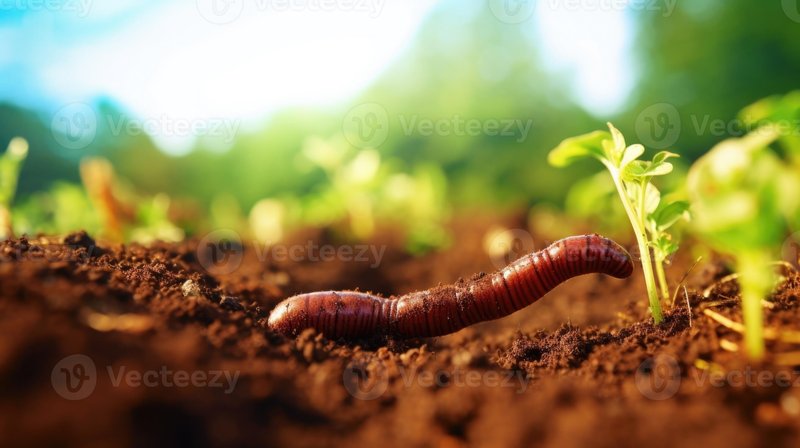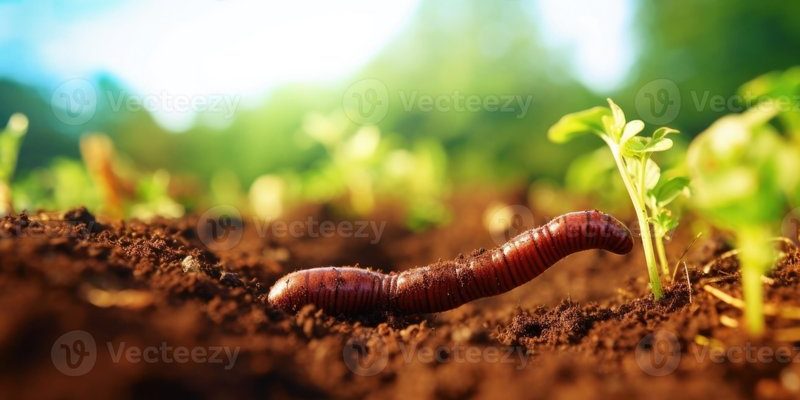
Imagine your garden as a miniature ecosystem, where every creature, no matter how small, contributes to the balance of life. Earthworms improve soil structure, aerate it, and help break down organic matter, which in turn nourishes the plants. By adopting organic practices that benefit earthworms, you’re not just protecting a species; you’re enhancing your garden’s productivity. It’s like giving your plants a cozy, nutrient-rich blanket to grow in!
Now, you might be wondering how you can help these little critters and promote their conservation. Don’t worry; it’s simpler than you think! From maintaining soil health to choosing the right gardening techniques, there are several ways you can play a role. Let’s explore the best organic practices that will not just support earthworm populations, but also improve your garden’s overall health.
1. Embrace Organic Gardening Techniques
The first step in earthworm conservation is to adopt organic gardening techniques. This means avoiding synthetic fertilizers and pesticides that can harm these beneficial creatures. Instead, utilize natural alternatives. Composting, for instance, enriches the soil while providing a habitat for earthworms.
When you make your own compost, you’re mixing kitchen scraps and yard waste, creating a nutrient-rich mix that’s perfect for your plants and attractive to earthworms. You could even consider vermicomposting, where you raise worms in a controlled environment to break down organic waste. This not only keeps the earthworms happy but also gives you high-quality fertilizer for your garden.
Another tip? Rotate your crops! By changing the location of your plants each season, you can prevent soil depletion and reduce pest buildup, which in turn gives earthworms a healthier habitat to thrive in. It’s all about working with nature, not against it.
2. Keep the Soil Moist and Well-Aerated
Earthworms love moist soil, so it’s important to maintain the right moisture levels. If the soil becomes too dry, earthworms may burrow deeper to escape the heat, making it harder for them to be beneficial. This is where practices like mulching come into play. Applying a layer of organic material on top of the soil helps retain moisture, keeps the temperature stable, and provides additional food for the worms as it breaks down.
Aeration is equally crucial. Compacted soil can suffocate earthworms and limit their movement. You can aerate the soil by gently turning it over with a spade or using a garden fork. This not only makes the soil more hospitable for earthworms but also allows air and nutrients to reach plant roots more effectively. Think of it as giving your plants and earthworms room to breathe!
3. Choose Native Plants
When selecting plants for your garden, consider opting for native species. Native plants are well-adapted to the local environment, which means they typically require less water and fewer resources. This creates a more sustainable habitat for earthworms.
Why? Native plants often have deep root systems that improve soil structure and reduce erosion, creating more spaces for earthworms to thrive. Moreover, they can attract beneficial insects and pollinators, creating a balanced ecosystem and reducing the need for chemical interventions. It’s like throwing a party for earthworms and all their friends!
Plus, planting a variety of native plants encourages biodiversity, which is good for your garden—and for the earthworms that call it home.
4. Avoid Tillage
Tillage, or turning over the soil, can be harmful to earthworms. Frequent tilling disrupts their habitats and kills off many worms in the process. Instead, consider no-till gardening methods. This approach involves planting directly into the soil without turning it over, which protects the delicate ecosystem below.
When you practice no-till gardening, you allow earthworms to do their thing. They naturally aerate the soil and break down organic matter without the stress of being disturbed. Plus, no-till gardening helps retain moisture and improves soil health over time. It’s like giving earthworms a day off to just relax and do their earthworm-y things!
5. Create a Diverse Habitat
To promote earthworm conservation, think about creating a diverse habitat within your garden. This includes planting a mix of flowers, vegetables, and herbs, as well as providing various shelters such as logs, rocks, and leaf piles. Earthworms thrive in environments with plenty of organic matter, so having diverse plant life creates a rich, varied setting for them.
Another helpful trick is to leave some areas of your garden un-mulched or minimally disturbed. This not only provides a refuge for earthworms but also allows them to contribute to soil fertility in these less-tended spots. Just remember, the more variety you have, the happier your earthworms will be!
6. Educate and Involve Others
If you’re passionate about earthworm conservation, why not share that enthusiasm with friends, family, or your gardening community? Educating others about the importance of earthworms and how they can be protected is a fantastic way to make a broader impact.
You could host workshops, start a community garden, or simply chat with fellow gardeners about the benefits of organic practices. When more people understand the little things that earthworms do for our gardens, they’re likely to join in the conservation efforts. After all, teamwork makes the dream work, right?
7. Monitor Soil Health Regularly
Finally, keeping an eye on your soil health is crucial for sustaining a happy environment for earthworms. Checking soil composition, moisture levels, and organic matter content can help you assess how well your practices are working.
Consider using simple tests to measure soil pH and nutrient levels. Healthy soil will have a diverse mix of life, including plenty of earthworms. If you notice their numbers dwindling, it might be time to reassess your gardening methods or explore new organic practices. Think of it as being a soil detective, looking for clues to help your garden thrive!
In conclusion, earthworms are invaluable allies in maintaining the health of your garden. By embracing organic practices, maintaining soil moisture and aeration, choosing native plants, avoiding tillage, creating diverse habitats, educating others, and monitoring soil health, you can enhance earthworm conservation. Not only will your garden flourish, but you’ll also be contributing to a healthier planet—one worm at a time! Let’s celebrate these little heroes and make sure they’ve got a cozy home in our gardens for years to come.

